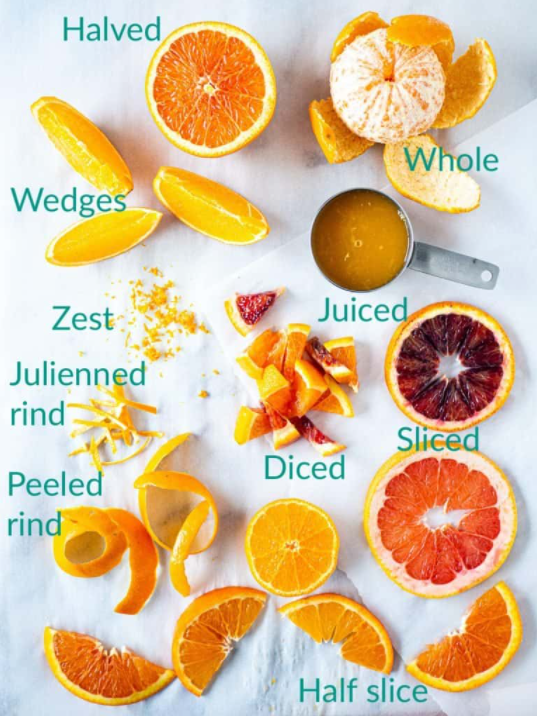All about Aussie Oranges!
Here are the most common ways to cut oranges to prepare them for decorating, cooking or juicing. Keep reading below to find out a little about a few different varieties of the most popular Australian Oranges.
Navel oranges – sweet, juicy and full of zest. Usually seedless, they are easy to peel and ideal as a healthy snack at any time of the day. They have thick, pebbly skins and very sweet juicy flesh. The skin is particularly good for making preserves or as candied peel.
Valencia Oranges – deliciously sweet and juicy, used for juicing as well as eating. Valencia is the most important commercial variety in the world, living up to its nickname of the “King of Juice Oranges”. It has a thin and slightly pebbly rind. The flesh is bright orange and extremely juicy and nearly seedless. Valencia is a late orange, which has a smooth, thin skin, and contains few if any seeds, pale flesh, a sharp flavour, and is very juicy.
Blood Oranges - Essentially, the blood orange is an orange that has one important characteristic, it has a crimson-red pigment to its flesh as well as it’s rind. They taste like a subtly sweet orange that has been infused with tangy red grapefruit and hints of tart cherries and raspberries. This crimson-red pigment in the blood orange comes from the blood oranges unique ability to produce Anthocyanins which is extremely rare for Citrus fruits. Anthocyanin, most commonly found in berries such as the blueberry, flowering plants and red wine (derived from red grapes) is one of the most powerful phyto-chemicals known in the plant kingdom. This group phyto-chemical’s are known for their potent antioxidant capability, being some 150 times more powerful than Vitamin C alone. (Phytochemicals are chemical compounds produced by plants, generally to help them resist fungi, bacteria and plant virus infections).
Cara Cara Oranges -The Cara Cara Blood Navel Orange has a deep pink flesh with an irresistible sweet flavour. They are much sweeter and less acidic than most oranges and are absolutely delicious. It is a seedless variety that can grow quite large. Unlike blood oranges where the main pigmentation is due to Anthocyanin, pigmentation in Cara Cara is due to carotenoids such as lycopene (Carotenoids, also called tetraterpenoids, are yellow, orange, and red organic pigments that are produced by plants and algae, as well as several bacteria, and fungi. Carotenoids give the characteristic color) .Lycopene is a plant nutrient with antioxidant properties. It's the pigment that gives red and pink fruits, such as tomatoes, watermelons and pink grapefruit, their characteristic color.
Photo Source: Garlic Delight

